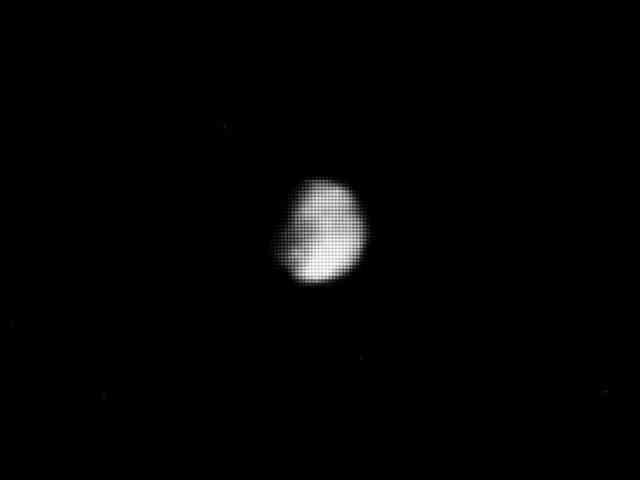

Voyager 2 took this photo of Saturn's outer
satellite, Phoebe, on Sept. 4, 1981, from 2.2 million kilometers
(1.36 million miles) away. The photo shows that Phoebe is about
200 kilometers (120 miles) in diameter, about twice the size of
Earth-based measurements; and dark, with five percent reflectivity--much
darker than any other Saturnian satellite. That, and information
from Earth-based observations, indicates Phoebe is almost certainly
a captured asteroid, and did not form in the original Saturn nebula
as Saturn's other satellites did. Phoebe is the only Saturnian
satellite that does not always show the same face to Saturn: Its
orbital period is 550 days. Its rotation period (length of day),
determined from Voyager 2 observations, is nine to ten hours.
Other ground-based observations that indicate that Phoebe is a
captured asteroid: It orbits Saturn in the ecliptic plane (the
plane in which Earth and most other planets orbit the Sun), rather
than in Saturn's equatorial plane as the other Saturn satellites
do. And Phoebe's orbit is retrograde--in the direction opposite
to that of the other satellites. Voyager is managed for NASA's
Office of Space Science by the Jet Propulsion Laboratory. (P-24137)